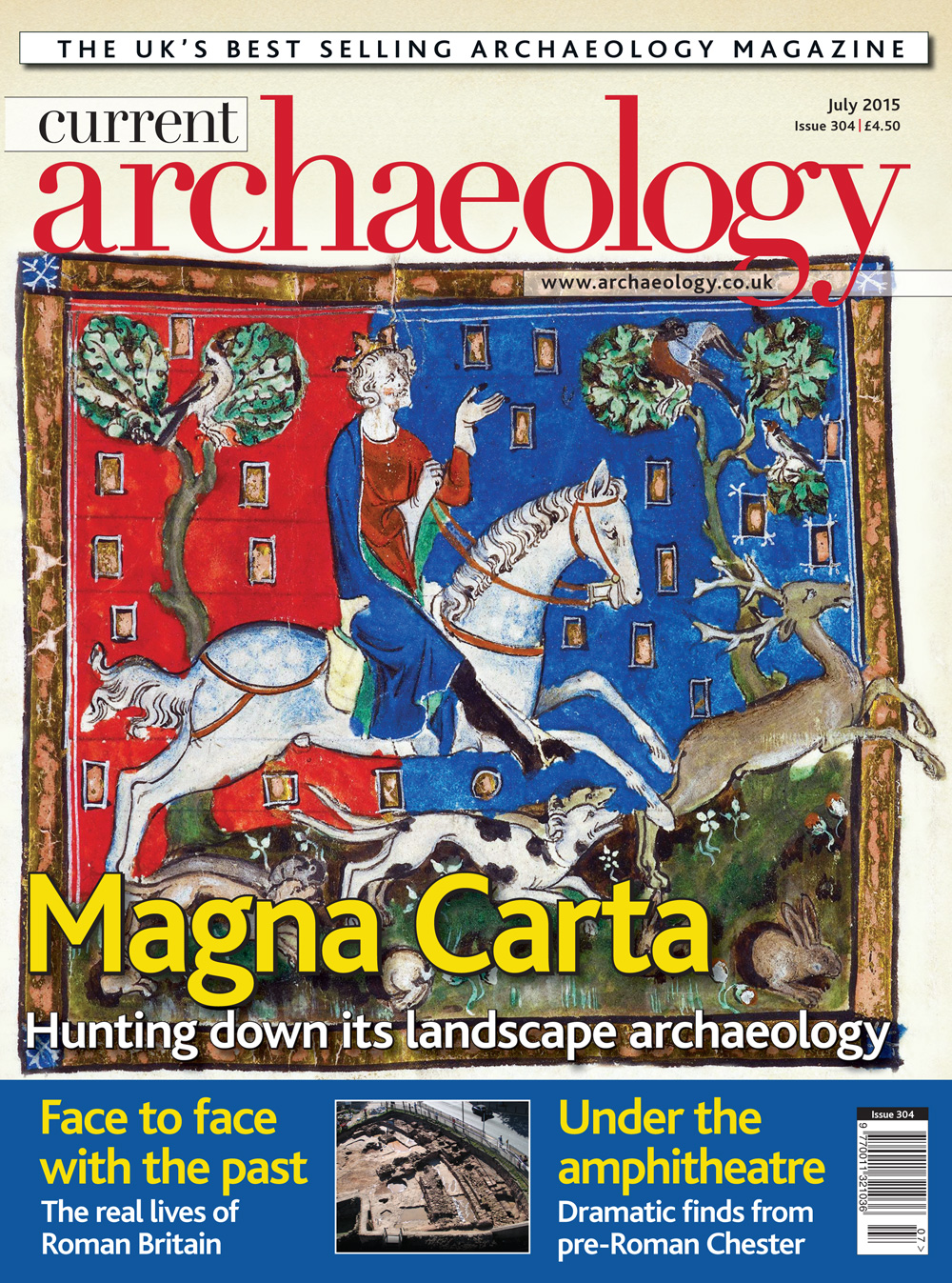Eight hundred years ago, a band of revolting barons famously forced Bad King John to seal Magna Carta at Runnymede. But while historians have pored over the documents, what about the archaeology? Why Runnymede, and what remains on the ground? Architectural historian and archaeologist Tim Tatton-Brown enlightens us. Tim then takes us to two must-see Magna Carta exhibitions: one at the British Library, the other in the glorious rooms of the Society of Antiquaries of London.
From headlining kings, we then turn to the everyday people of Roman Britain. Drawing on his latest book, Guy de la Bedoyere examines the evidence to consider how far we can identify individuals from the material record ‚ and what it might tell us about the realities of life in Britannia.
Thereafter, we delve deep into our pre-Roman past, as Dan Garner and Tony Wilmott take us under the amphitheatre in Chester. It has generally been assumed that the history of the city began with the arrival of the Roman army in the AD 70s, so the team was much surprised to discover that Chester’s legionary amphitheatre ‚ the largest known in Britain ‚ had, in fact, preserved one of the most important prehistoric sites of north-west England.
Finally, we visit south-east Ireland where we explore the rich Viking settlement at Woodstown. What has been found there, and how does it illuminate a change in lifestyle for those vicious Vikings?
Good reading!
Nadia Durrani
IN THIS ISSUE:/n
FEATURES/n
VIKINGS IN IRELAND/n
From raiders to traders
Exploring a major Viking-era settlement and commercial centre at Woodstown, uncovered during the construction of the Waterford City Bypass.
UNDER THE AMPHITHEATRE/n
Charting pre-Roman Chester
Did Chester’s history really begin with the arrival of the legions? Recent archaeological work beneath the city’s amphitheatre – the largest known in Roman Britain – suggests rather earlier origins.
FACE TO FACE WITH THE PAST/n
Uncovering the real lives of Roman Britain
How far can you identify individuals in the archaeological record, and what can we learn about the experience of ordinary people in Britannia?
MAGNA CARTA AT 800/n
Runnymede; British Library; Society of Antiquaries
Our special coverage of the Great Charter’s 800th anniversary includes a look at its landscape archaeology, and two major exhibitions exploring its significance.
/n
/n
NEWS/n
Roman grave near Aylesbury bucks trends; Facing the past at Harwell; Revealed: the Brightlingsea harpy; Stacking up evidence; Pictish fort at Dunnicaer; Did leprosy reach Britain from Scandinavia?; Cannibal clues at Gough’s Cave; Bootlegged glass in Elizabethan Yorkshire; Historic saltworks restored; Linlithgow’s lost past revealed.
REGULARS/n
Insight
Stonehengiana: ‘Wish You Were Here’.
Context
From rags to Renaissance treasures: exploring the Waddesdon Bequest at the British Museum
Reviews
Lord and Pharaoh; Pontcysyllte Aqueduct and Canal; Wild Ruins
Sherds
Chris Catling’s irreverent take on heritage issues
Odd Socs
The Goss Collectors’ Club

